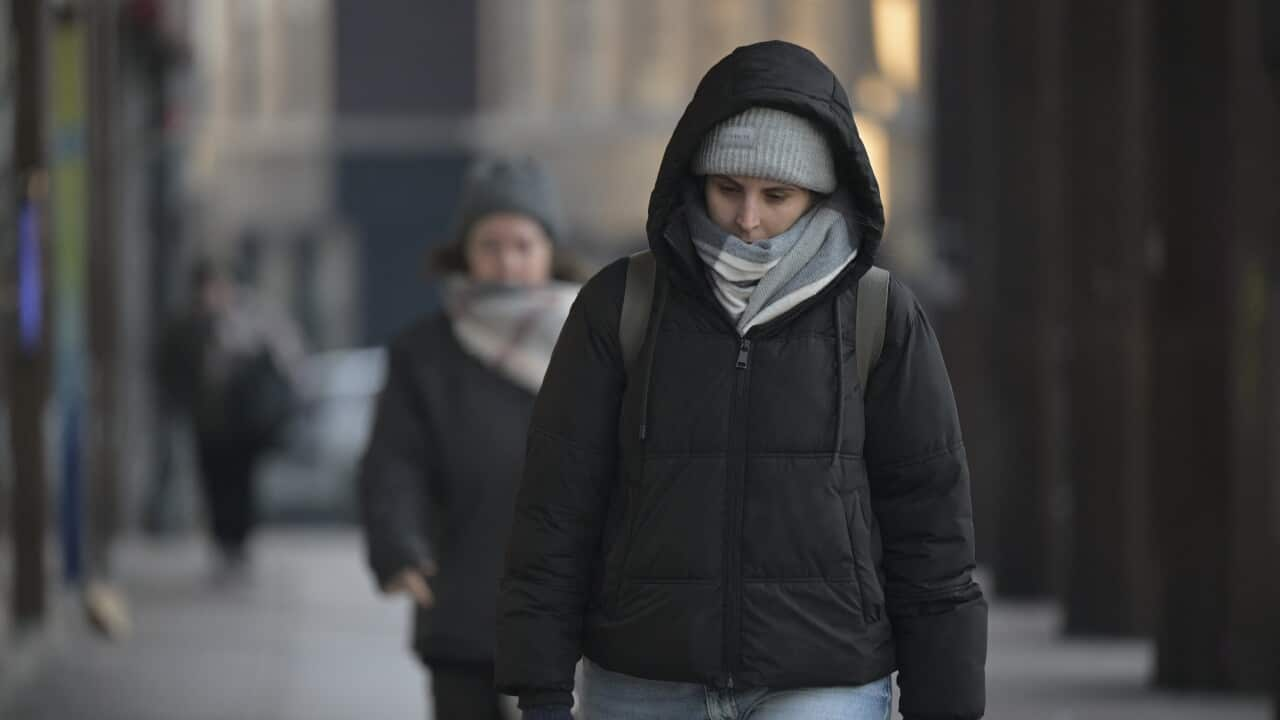If you work in an office, you're likely to have a few colleagues who layer themselves with scarves, shawls and blankets while others around them sit comfortably in shirts.
And, if you're female, you're more likely to be one of the rugged-up ones — according to a 2015 article in the Nature Climate Change journal, which found air conditioning in offices was often set at temperatures more comfortable for men.
So why do temperatures have different effects on people of different sexes, and is there a happy medium that offices can strike?
In search of answers, SBS News interviewed several experts.
Who decided on the ideal office temperature?
The average office temperature in Australia is 22C, but this might need an update.
Many office climate control systems are based on decades-old data, according to Professor Richard De Dear from the Indoor Environmental Quality Lab at the University of Sydney.
In the 1960s, the American Society of Heating, Refrigerating, and Air-Conditioning Engineers produced a set of guidelines on how to create ideal indoor thermal conditions.
The guidelines — known by the acronym ASHRAE 55 — were developed by studying how comfortable a group of office workers were with different combinations of temperature, humidity, wind and speed.
However, reflecting the demographics of many offices in that time and place, the study's participants were all men.
While there have been significant changes to the ASHRAE guidelines in the last ten years, these updates haven't been uniformly rolled out in offices nationwide.
When designing a building, engineers try to achieve a balance between the heat people generate internally and heat being lost within an environment, de Dear explained.
The formula worked off the assumption that males and females had the same metabolic rate, or heat input, which is not the case, the climatology expert said.
"More detailed research on the metabolism of the two sexes has identified that, actually, we've been overestimating female heat production ... There's roughly a 20 per cent difference," he told SBS News.
"Of course, there are many sub-segments of that population, but generally speaking, women are operating at a lower metabolic rate, so they need more environmental heat."
Why do women and men experience temperatures differently?
There are three main factors affecting women's thermal comfort in the workplace: their body-mass-to-surface ratio, hormones and clothing.
Females may be more sensitive to a drop in temperature as a smaller human body has a larger surface area relative to their body mass, said Shane Maloney, a professor of physiology at the University of Western Australia.
"Basically, the amount of metabolic heat that somebody makes is really proportional to their body mass, but they're losing that across their body surface," Maloney told SBS News.
"And so, females tend to lose heat for the same heat production faster than men."

Experts say women often lose heat more quickly than men as they have a larger surface area proportionate to their body mass. Source: Getty / Eitan Abramovich/AFP
"Of course, a big part of our perception of temperature is input from temperature sensors in the skin," he said.
"So that feeds into the brain pathways that give us the perception of heat and cold and makes females feel a little bit colder in the same conditions as well."
De Dear added that dress customs — such as women more commonly wearing tights or dresses — further amplified this problem.
"There are particular types of cold that affect women more negatively than men. And draught around the lower legs is a very common complaint from women in office workplaces," he said.
"So another solution is a localised heating source, and the ideal would be to place that under the work surface, under the desk."
In fact, one of the recent updates to the ASHRAE 55 guidelines included measuring thermal discomfort in the ankles.
Is there a comfortable average temperature for both sexes?
De Dear said there could be as much as a two-degree difference between male and female colleagues so personalisation was the key to keeping everyone happy.
"One size doesn't fit all. And so the workplace of the future will have that opportunity for personalisation. We can create or curate our own thermal environment," he said.
"Working from home solves a lot of these issues because we can control our workplace at home exactly how we want it without having to negotiate with people sitting next to us."











